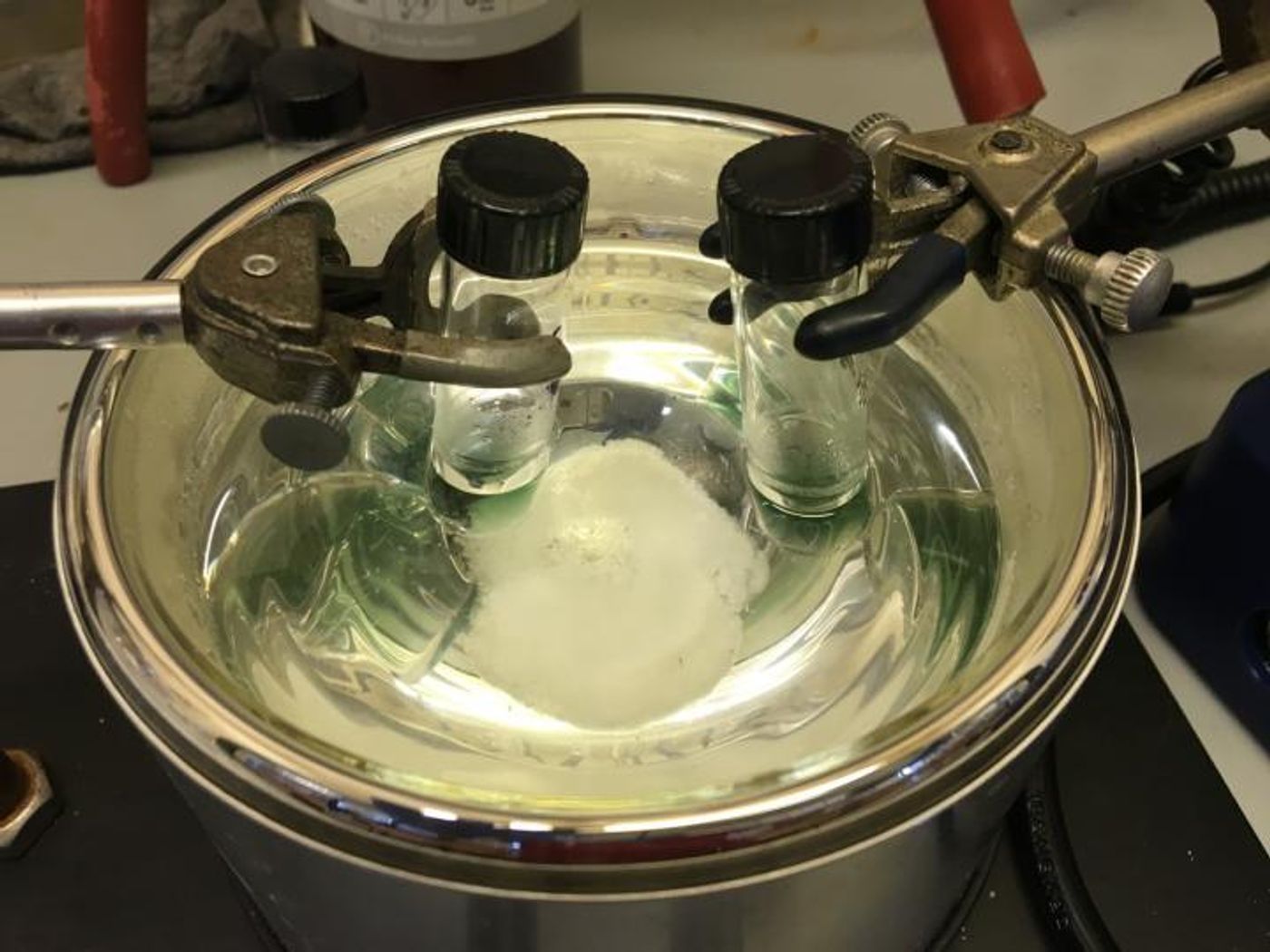Creating Cleaner Chemistry, One Reaction at a Time
The ability to efficiently and cleanly break common chemical bonds is of great interest to pharmaceutical and industrial product companies for use in developing new chemical compounds in drugs and in creating plastics and other products. Current methods for breaking stable bonds require a lot of energy and can generate noxious waste products. Chemists at Southern Methodist University, in collaboration with John Hopkins University, have found a cost effective and cleaner method to break the stable C-H bond.
The carbon-hydrogen bond (C–H bond) is one of the basic building blocks of life and can be found in many organic compounds. The bond is covalent, meaning that the carbon can share its outer electrons with up to four hydrogens. This pairing completes both of their outer shells making them strong, stable, and relatively unreactive.
"Some of the most useful building blocks we have in the world are simple, plentiful hydrocarbons like methane, which we extract from the ground. They can be used as starting materials for complex chemical products such as plastics and pharmaceuticals," said Isaac Garcia-Bosch, Harold A. Jeskey Endowed Chair assistant professor in the Department of Chemistry at SMU. "But the first step of the process is very, very difficult -- breaking that carbon-hydrogen bond. The stronger the bond, the more difficult it is to oxidize."
Currently, the chemical industry uses oxidation to break the solid bond between carbon and hydrogen molecules to make products such as methanol and phenols. An oxidation reaction causes the molecule to combine with oxygen, breaking C-H bonds and forming new carbon-oxygen bonds. Even though the reaction utilizes basic oxidizing of compounds, the conventional method uses inefficient and expensive oxidants to break the C-H bond, which leaves behind toxic waste products.
Garcia-Bosch and chemist Maxime A. Siegler, director of the X-ray Crystallography Facility at The Johns Hopkins University, decided to introduce a copper catalyst combined with hydrogen peroxide and a nitrogen-based ligand to convert C-H bonds into C-O bonds.
Combining the copper metal with hydrogen peroxide as the oxidizing agent presents a new and much cheaper method of oxidation than what is typically used. In order to trigger the reaction, the team successfully tested a nitrogen-based ligand that combines with the copper to initiate oxidation and bond breakage. Using these substrates is not only much more cost effective but also cleaner. One of the main waste products from using hydrogen peroxide is plain water.
"This is the first time in our field that we've used copper to do this C-H oxidation in a very efficient way," Garcia-Bosch said. "Copper is very versatile in nature. With small changes in the environment of copper, you can do very diverse chemistry. That's why we picked it."
Now that the team has devised the new method for the oxidation reaction, they need to be able to control its specificity. They have tested the system across different substrates and found that the reaction is not very selective. With molecules that have several different C-H bonds, the reaction will oxidize all of them in a non-selective manner. The goal is to find selective catalysts that allow the chemists to choose which types of C-H bonds to break.
"Catalysts have to be able to select between different C-H bonds and form new carbon-oxygen, carbon-nitrogen or carbon-fluoride bonds, for example," Garcia-Bosch said. "Biological processes use metals to do this all the time, for example in our bodies when our liver processes a pharmaceutical that we ingest using iron. Minerals such as iron, copper, manganese, calcium and potassium are critical for the natural catalytic process. For example, trees use manganese (photosynthesis) to transform water into the oxygen that we breathe"









